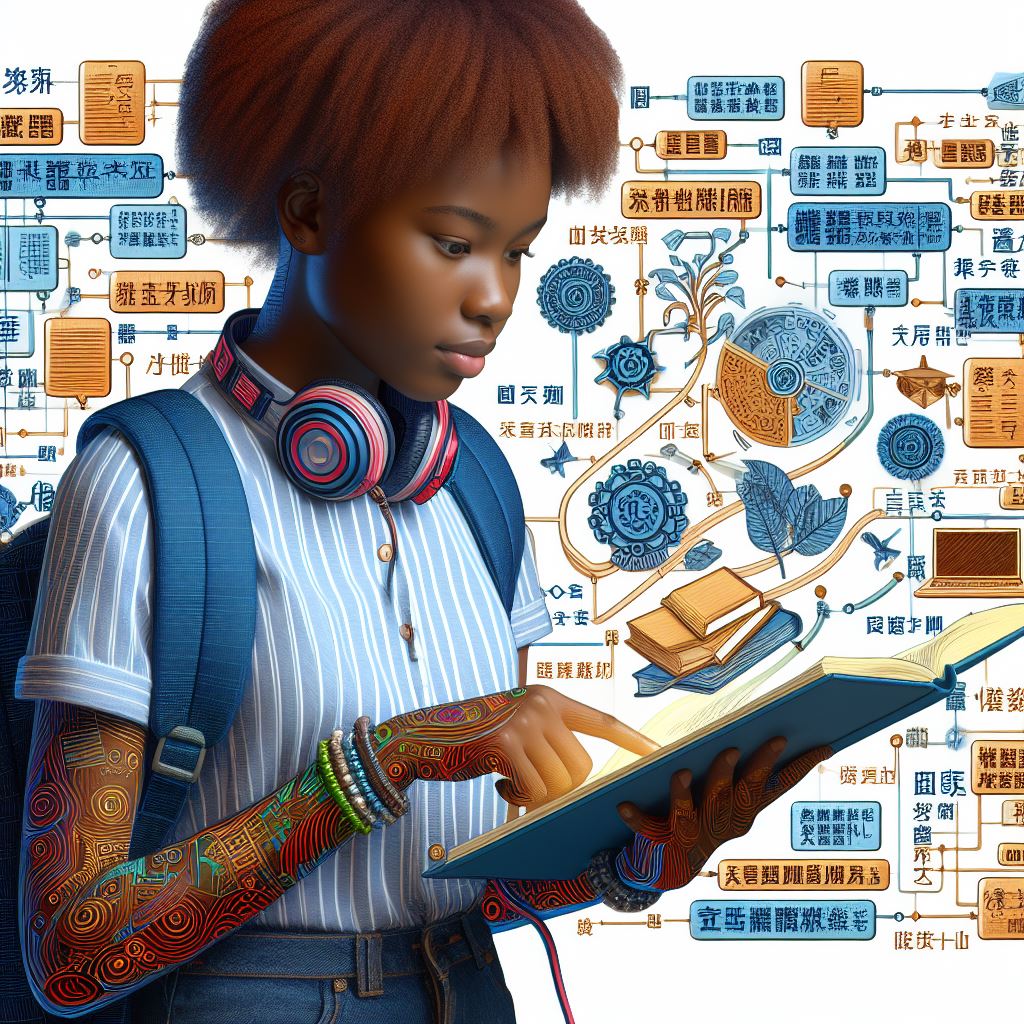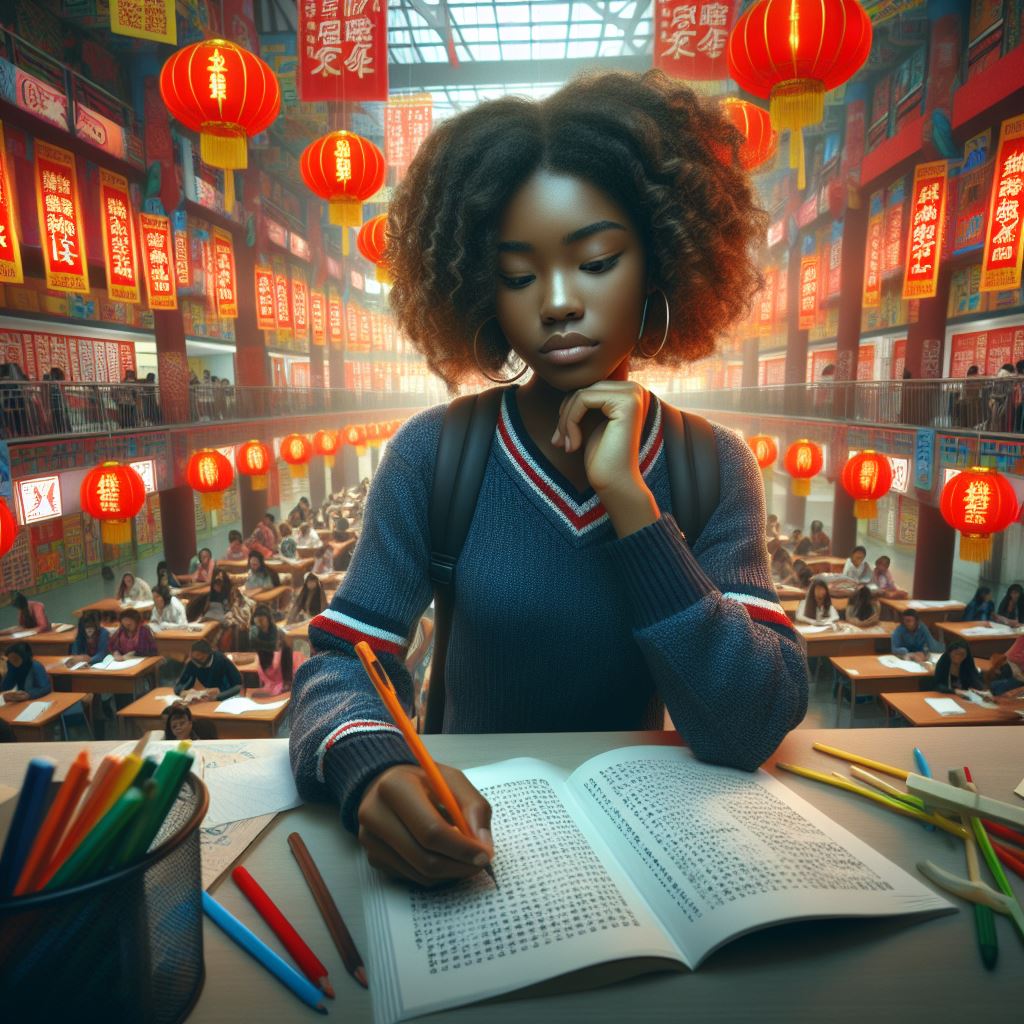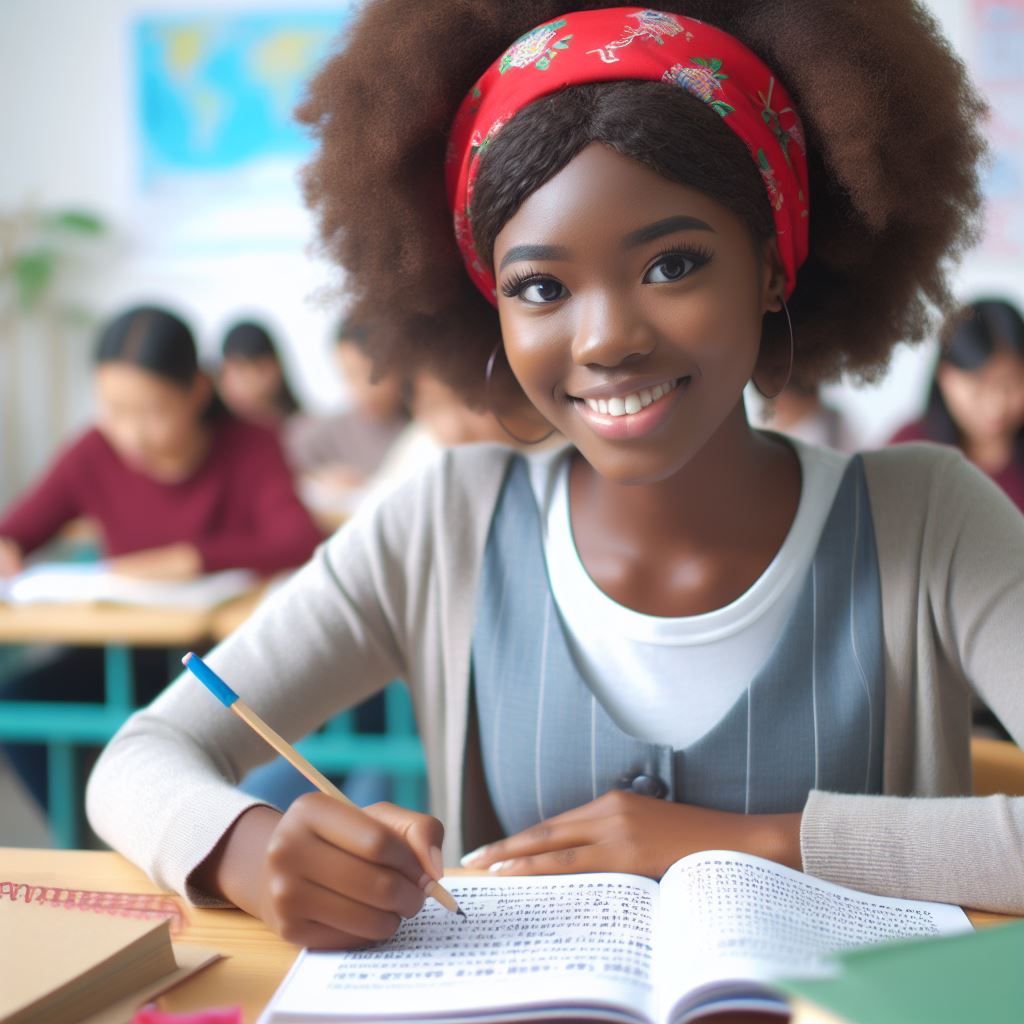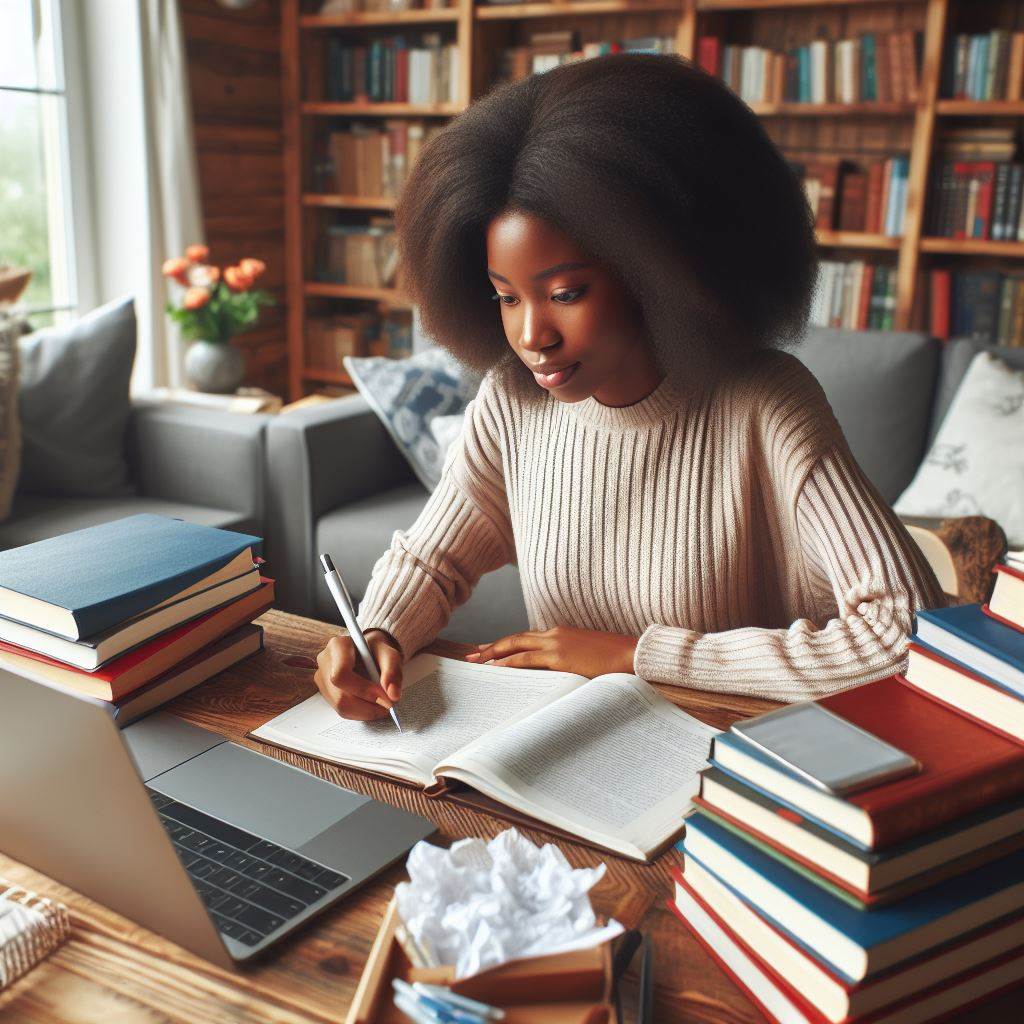Introduction
In the dynamic realm of Nigerian arts, the fusion of music and visual expression is a captivating phenomenon.
This relationship, deeply rooted in the cultural fabric of Nigeria, serves as a rich source of inspiration and innovation for visual artists across the nation.
Brief overview of the relationship between music and visual arts in Nigeria
The interconnectedness between music and visual arts in Nigeria is undeniable.
From the pulsating rhythms of Afrobeat to the soulful melodies of Highlife and the hypnotic tunes of Juju, Nigerian music genres have long served as a driving force behind the creative endeavors of visual artists.
This cross-pollination of artistic mediums has resulted in a vibrant tapestry of visual representations that reflect the diverse soundscape of Nigeria’s musical heritage.
How music influences and inspires visual artists in Nigeria
The influence of music on Nigerian visual arts is multifaceted and profound.
Music’s power to evoke emotions and ignite imagination provides visual artists with rich inspiration.
Nigerian music’s rhythmic beats, melodic tunes, and evocative lyrics inspire visual artists to create captivating visual forms.
Captivated by music’s energy and depth, visual artists seek to capture its essence in their creations.
Music infuses Nigerian visual arts with dynamic, multidimensional quality, from vibrant paintings to abstract sculptures echoing live performances.
Music weaves through Nigerian visual arts, informing themes, motifs, and storytelling techniques, creating a cohesive narrative.
Artists frequently explore social, cultural, and political issues through themes in music, creating a profound dialogue between sound and sight.
The music-visual arts bond in Nigeria is symbiotic, fostering mutual inspiration, innovation, and creativity.
Drawing from Nigeria’s musical heritage, visual artists ensure the thriving and evolving cultural landscape, reflecting interconnected artistic expression.
Historical Perspective
Traditional Nigerian music and its role in shaping visual arts
Traditional Nigerian music serves as a cultural bedrock, influencing and inspiring visual artists for generations.
The rhythmic beats, melodious tunes, and poignant lyrics of traditional Nigerian music resonate deeply with visual artists.
Incorporating elements of traditional music into their work, visual artists capture the essence of Nigeria’s rich cultural heritage.
From vibrant paintings depicting traditional music performances to intricate sculptures inspired by indigenous musical instruments, traditional Nigerian music permeates every aspect of visual arts.
How colonial influences introduced new music genres and impacted visual arts
Colonial influences brought about a seismic shift in Nigeria’s musical landscape, introducing new genres and styles.
Western musical genres such as jazz, blues, and gospel were embraced by Nigerian musicians, creating a fusion of traditional and modern sounds.
These new music genres, infused with colonial influences, also left a significant imprint on Nigerian visual arts.
Visual artists began incorporating elements of Western music into their work, reflecting the changing cultural dynamics of colonial Nigeria.
From paintings depicting jazz clubs and gospel choirs to sculptures inspired by Western musical instruments, colonial influences reshaped Nigerian visual arts.
The interplay between traditional Nigerian music and colonial-inspired genres created a vibrant tapestry of artistic expression.
Ultimately, Nigerian visual arts are a reflection of the country’s rich musical heritage and its complex history of cultural exchange and transformation.
Read: Exploring Semiotics in Communication Arts
Contemporary Trends
Analysis of current Nigerian music scenes and their impact on visual arts
- Nigerian music today is a melting pot of various genres and influences.
- Artists like Burna Boy and Wizkid have gained international acclaim, putting Nigerian music on the global stage.
- The fusion of traditional Nigerian sounds with modern beats has created a unique musical identity.
- Visual artists, inspired by this rich musical heritage, have incorporated these influences into their work.
- The vibrant colors, rhythms, and energy of Nigerian music are reflected in the dynamic art pieces being created.
Examination of how popular music genres like Afrobeat and Highlife have influenced modern visual artists
- Afrobeat, pioneered by Fela Kuti, is known for its politically conscious lyrics and infectious rhythms.
- Visual artists are drawn to Afrobeat’s message of resistance and use it to create powerful protest art.
- The boldness and rebellious spirit of Afrobeat can be seen in the daring and unconventional choices made by artists.
- Highlife music, with its joyful melodies and danceable tunes, has inspired artists to create playful and colorful artworks.
- Highlife’s celebration of life and culture is reflected in the vibrant and lively paintings and sculptures produced.
Overall, Nigerian music continues to shape and influence the visual arts scene in Nigeria, creating a dynamic cultural landscape where music and art intersect to create stunning works of creativity and expression.
Read: Developing Critical Thinking in Language Arts
Cross-Cultural Influences
Exploration of how music from other cultures has influenced Nigerian visual arts
Nigeria’s vibrant visual arts scene is a melting pot of influences, where the rich tapestry of global music intertwines with local traditions to inspire creativity and innovation.
Music from various cultures around the world has played a significant role in shaping Nigerian visual arts, enriching them with diverse rhythms, melodies, and narratives.
From the percussive beats of West African drumming to the soulful melodies of American jazz, the infusion of global musical styles into Nigerian visual arts creates a dynamic and eclectic artistic landscape.
Visual artists draw inspiration from the sounds and rhythms of these diverse musical traditions, translating them into captivating visual narratives that reflect the multicultural fabric of Nigerian society.
Through their artwork, visual artists celebrate the universal language of music, exploring themes of cultural exchange, identity, and belonging.
Nigerian visual artists fuse global music into vibrant paintings, sculptures, and multimedia installations, harmonizing artistic expression.
Discussion of collaborations between Nigerian musicians and visual artists from different parts of the world
Nigerian musicians collaborate with global visual artists, enriching cultural exchange and creative dialogue across diverse traditions.
These collaborations transcend geographical boundaries, uniting artists in a shared exploration of artistic expression and cultural exchange.
Inspired by Nigerian music, visual artists craft captivating narratives reflecting the vibrancy and diversity of Nigerian culture.
Nigerian musicians draw inspiration from visual imagery, enriching their music with depth and meaning through artistic collaborations.
Artists unite disciplines and cultures, nurturing appreciation and understanding for diverse traditions through collaborative projects.
Nigerian artists shine globally, sharing talent and ideas, enriching visual arts and music through collaborations.
The global music-Nigerian visual arts intersection showcases creative collaboration and cultural exchange’s power.
Nigerian visual artists push boundaries, inspiring global audiences by embracing diverse musical influences and collaborating worldwide.
Read: Student Experiences: Life in Communication Arts
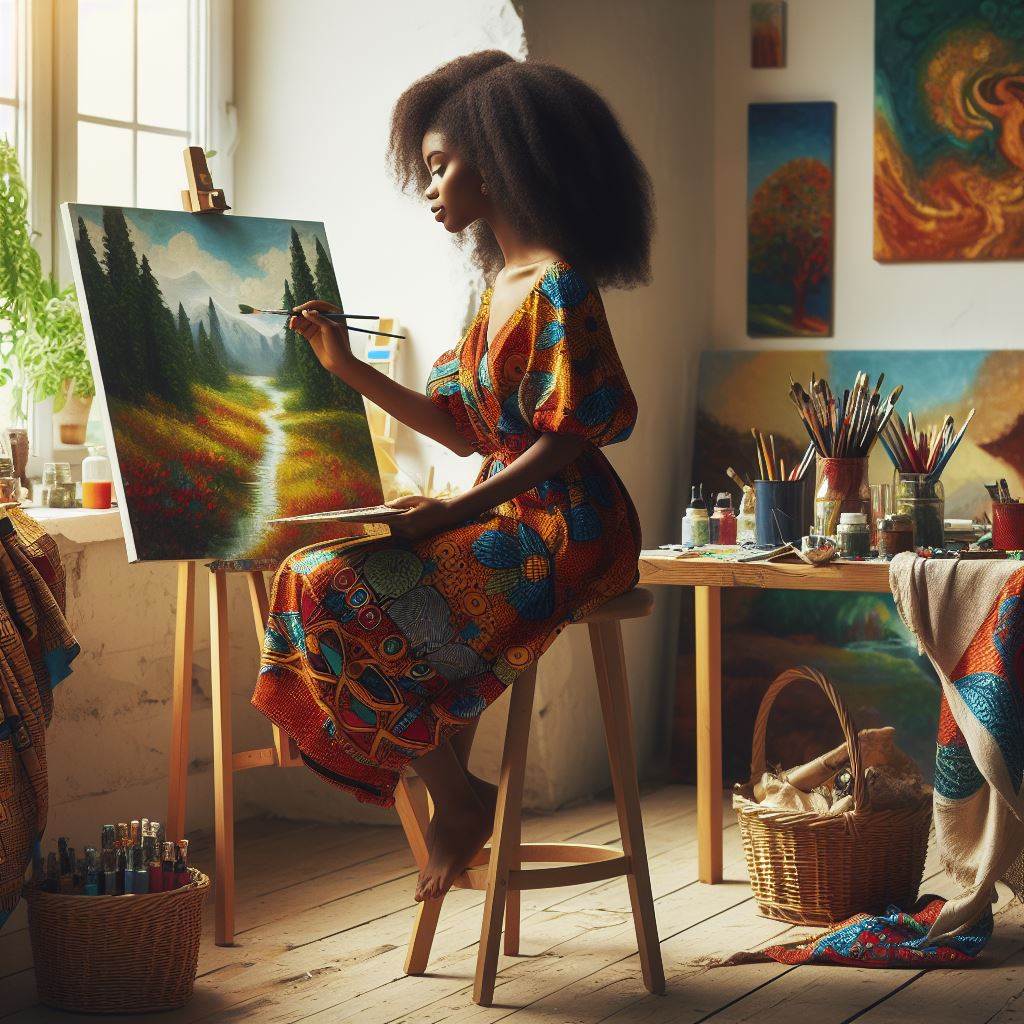
Discover More: Strategic Studies: Conflict Resolution in Nigeria
Find Out More: Understanding Foreign Literary Genres and Movements
Uncover the Details: Why Learn French? Benefits for Nigerians
Find Out More: Importance of Security Studies in Nigeria Today
Social Commentary
- Nigerian artists use music to tackle social issues in visual art.
- Music serves as a powerful form of protest and expression.
Examination of how Nigerian artists use music as a medium to address social issues in their visual art
Music plays a significant role in Nigerian visual arts, particularly when it comes to addressing social issues.
Nigerian artists often use music as a form of social commentary, using their art to shed light on issues such as political corruption, social inequality, and cultural identity.
Analysis of how music serves as a form of protest and expression in Nigerian visual arts
One way in which Nigerian artists use music to address social issues in their visual art is by incorporating lyrics or imagery from popular songs into their work.
These artists find inspiration in meaningful song lyrics, using them to convey messages or make statements.
Artist Njideka Akunyili Crosby, renowned for intricate collages blending Nigerian and American culture, incorporates Nigerian music references.
Crosby creates a dialogue between music and visual art, drawing connections by using lyrics or imagery from Nigerian songs.
In addition to using music as a source of inspiration, Nigerian artists also employ it as a form of protest and expression in their visual art.
Nigerian artists, like many others, use music as a powerful tool for expressing dissent and challenging the status quo.
Nigerian artists communicate frustrations, hopes, and dreams through art, using music to speak truth to power.
Through bold imagery, provocative symbols, or subversive themes, music conveys crucial social messages in Nigerian visual arts.
Music significantly impacts Nigerian visual arts, serving as a medium for addressing social issues, expressing dissent, and provoking thought.
Nigerian artists engage with their audience by incorporating music elements, sparking conversations and inspiring change.
Read: Communication Arts: Balancing Theory and Practice
The Role of Music Festivals
Exploration of the connection between music festivals and visual arts exhibitions in Nigeria
In Nigeria’s vibrant cultural landscape, the connection between music festivals and visual arts exhibitions is deeply intertwined, creating synergies that celebrate the richness of artistic expression.
Music festivals serve as dynamic platforms for showcasing not only musical talent but also visual arts, providing a multifaceted experience for attendees.
Transform Your Career with Expert Guidance
Get personalized mentorship consulting that’s tailored to your unique path. Our expert advice is actionable and exclusive.
Get StartedVisual arts exhibitions, often curated alongside music festivals, offer a space for artists to display their work in conjunction with live performances, creating immersive artistic environments.
These exhibitions feature a diverse range of visual mediums, including paintings, sculptures, installations, and multimedia artworks, reflecting the eclectic nature of the festival experience.
How music festivals provide a platform for visual artists to showcase their work
At music festivals, visual artists can reach a broad audience, engaging with attendees in dynamic outdoor settings.
Showcasing their work at music festivals exposes visual artists to a wider audience of art enthusiasts and music lovers.
The festive atmosphere of music festivals creates an interactive environment for experiencing art. Attendees engage directly with artworks and interact with artists.
At music festivals, visual arts exhibitions foster collaboration. They bring artists, musicians, and audiences together, celebrating creativity and diversity.
Music festivals and visual arts exhibitions in Nigeria showcase the symbiotic relationship between music and visual arts. Artists engage with audiences creatively.
Learn More: Contemporary Art Movements in Nigeria
Conclusion
In this blog post, we have explored the profound impact of music on Nigerian visual arts.
From the vibrant beats of Afrobeat to the traditional rhythms of highlife music, Nigerian artists have drawn inspiration from a rich musical tradition.
As we reflect on the ongoing influence of music on Nigerian visual arts, it is clear that this relationship is dynamic and constantly evolving.
Artists continue to experiment with new forms, incorporating musical elements into their work in innovative ways.
Looking ahead, we can expect to see even greater collaboration between musicians and visual artists in Nigeria.
With the rise of digital platforms and social media, these creative industries are more interconnected than ever before, opening up new opportunities for cross-pollination and mutual inspiration.
Overall, the fusion of music and visual arts in Nigeria serves as a testament to the country’s rich cultural heritage and artistic innovation.
This unique synergy will undoubtedly shape the future of Nigerian creativity, fueling new artistic expressions and pushing boundaries in the years to come.

